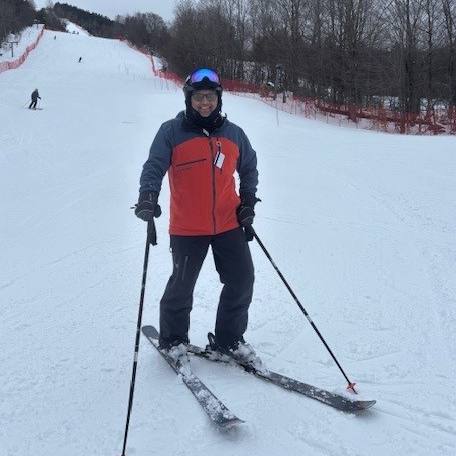Judy Phillips found hope when hope was running out thanks to a physician willing to try new (and old) treatments, a team of "wonderful nurses," and the "steadfast support and optimism" of her husband.

Written by Judy Phillips
I am a seven-year survivor of multiple myeloma, an incurable cancer of the bone marrow. Myeloma is a relatively rare cancer, so many people who are diagnosed with it have no idea what they are being told they have. I had heard of it but didn’t remember what it was exactly. All I knew was that it was something terrible, and I didn’t want it. My husband and I promptly burst into tears when we heard the diagnosis in the doctor’s office.
It was several weeks before I could stop crying. Every time I thought about the fact that I was now a cancer patient a fresh round of tears came into my eyes. Finally, when I got tired of crying -- and my husband begged me to stop -- I started focusing on what I could do to eliminate this scourge from my life. Although my first doctor, a hematologist/oncologist in Virginia, told me I had three to five years to live, I refused to believe this. I was determined to get cured. To this end, I accepted treatment with an aggressive drug that had just been approved by the FDA.
Unfortunately, I was not able to tolerate the new drug -- I experienced excruciatingly painful peripheral neuropathy in my legs, making it difficult for me to even get off the couch. I was tried on another new drug but continued to have intolerable side effects. I could tell by the look on my doctor’s face that he was running out of ideas.
But I was unwilling to give up. I convinced my husband to go with me to Little Rock, Arkansas, where the medical center includes a large facility completely dedicated to myeloma research and therapy. I spent almost a year there, undergoing two grueling stem cell transplants, both with stem cells harvested from my own body. I got very sick there. They had to put me in the ICU for two weeks, and from there I was transferred to a rehabilitation hospital to teach me how to walk again. Despite everything I had gone through, I still wasn’t willing to give up.
The next leg of my cancer journey took me almost across the country -- to Mayo Clinic in Arizona, where I was placed under the care of Dr. Keith Stewart, dean of Research, and the most knowledgeable and compassionate physician I have ever met. Dr. Stewart was also stumped at first glimpse of the history of my disease, since I could not tolerate so many of the new drugs that were now being used widely to extend people’s lives. He thought for a few moments, then came up with the name of an old drug that is frequently overlooked these days. I was able to stay on Cytoxan for almost a year with no noticeable side effects. I took 10 pills once a week, then forgot about it for the rest of the week while I went on with my life.
Unfortunately, this blissful situation did not last. The drug began to have deleterious effects on the other cells in the bone marrow, leading Dr. Stewart to be concerned that I might eventually get another cancer. A very disconcerting -- and depressing -- situation to say the least.
I tried another new drug that had recently been approved and had yet another negative experience. The dosage of the drug required to give me an adequate quality of life (the holy grail for cancer patients) was too low to stop the cancer cells from multiplying. Then Dr. Stewart came to the rescue again, suggesting that I enter a clinical trial for a new drug, a drug that doesn’t yet have a name, only a number, because it is in a Phase One clinical trial, the earliest stage of research on humans. This was a drug that hadn’t even been tested on animals, since their cells were lacking the receptors necessary for the drug, an antibody, to bind to. Although I was afraid, I had complete faith in Dr. Stewart’s judgment and knowledge of the drug. I decided to apply for the trial.
I am now in my seventh month of participation in the study. I have been infused with the research drug 13 times now. And I have been responding. And tolerating the drug well. Although I have stopped hoping for a cure (I have even stopped counting the number of times I was in remission and then relapsed), I now have hope that I will be able to survive thanks to regular infusions of the drug I am now taking -- what they call maintenance therapy. My cancer will be managed -- like diabetes or any one of a slew of other illnesses for which there is no cure -- and I will be able to enjoy a long life full of all the joys life has to offer. This is my hope.
In addition to the groundbreaking research on multiple myeloma currently underway at Mayo, I want to call attention to the other wonderful aspects of care at Mayo Clinic. As the words that you see inscribed on the walls when you enter the building testify, this is a hospital dedicated to one thing only: the interest of the patient. This means that wherever possible the treatment chosen will be the one that gives the least amount of pain, that you will be seen by your doctor promptly and also given enough time to ask whatever questions are in your mind. This has been my experience since becoming a patient at the Mayo Clinic, and I would recommend it to anyone who is seeking the best quality of care for themselves or for anyone they love.
Thank you Mayo Clinic and Dr. Stewart for offering hope when hope was running out, and thanks also to the wonderful nurses who have been caring for me during the nine-hour days I spend every other week in the research oncology unit on the third floor. Sarah, Amber, Rose, and sometimes Amanda and Christina: you have been delightful companions and steady support during the arduous treatment hours and needle pricks. Last but not least, I want to thank my husband, Dr. Phil Phillips, who has spent countless hours trying to learn more about my complicated disease and whose steadfast support and optimism has never wavered. Without you I would never have made it so far.







